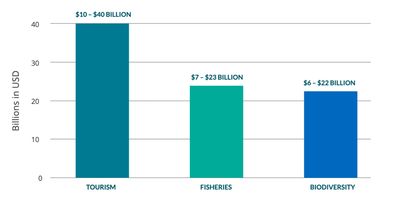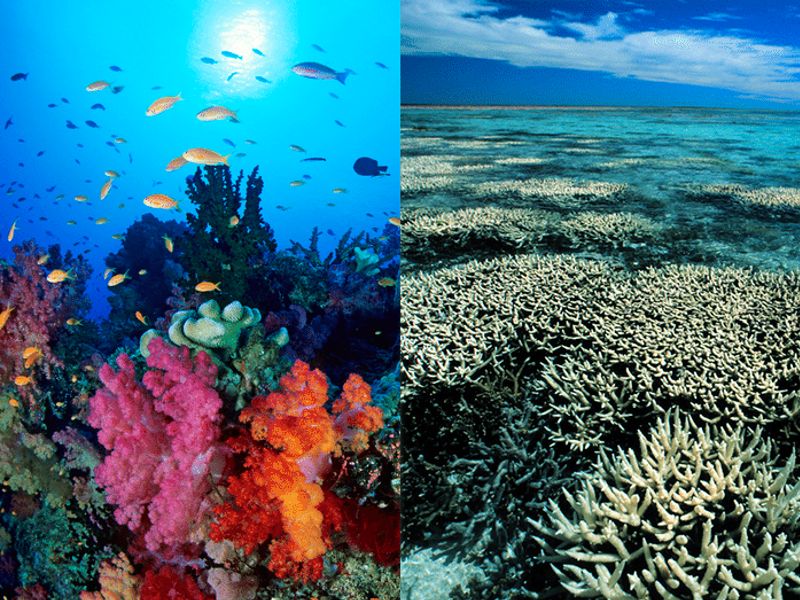Environmental impacts

Impacts on marine life
Coral reefs play an irreplaceable role in the ecosystem, and they contain a high biodiversity, which is how they got their nickname — ” the tropical rainforest of the sea” ; they provide both food and environment for many fish and plankton species. Therefore, coral bleaching caused by climate change is also adversely affecting marine communities. For example, a study in Papua New Guinea demonstrated a decline in fish communities as associated coral communities are declining in the mean time.
The growth rate of coral reefs is slow, they only grow approximately one centimeter a year. Unfortunately, the rate of coral bleaching is relatively faster: once the sea temperature continues to rise, the damage on coral reefs will increase.
Butterfly fish are found all over the world, and they seem to have a huge chance of survival, but it is unexpected that one day it will gradually become an endangered species due to coral bleaching. The main reason is because they exclusively feed on coral polyps with a strong dietary preference. Therefore. if this source of food disappears, the survival rate of these fish will drop significantly. Coral reefs are also a “sanctuary” for butterfly fish, which act as a hideout for predators.

Impact on the economy
Coral reefs have become a haven for many creatures in the ocean; its bleaching has not only affected the original rich ecology, but also impacted the economic situation of many countries. More than a million people depend heavily on coral reefs because of the income they bring to tourism and fisheries. According to statistics, the net present value of coral reef degradation from bleaching could drop from $8.4 billion to $5 billion.
Coral bleaching causes many economic losses to various industries such as tourism, fisheries and biodiversity. (estimated value is shown)
Many tourists have been snorkeling due to the view of colorful coral reefs. The coral bleaching has caused the seabed to lose its essential aesthetic charm, resulting in loss of income and tourists. The communities of fish and marine life that use coral reefs as habitats will also change or even disappear; in addition to the lack of landscapes in the seabed, fishermen’s catches would reduce as well, which will cause food supply conflicts. Also, for those who use coral reefs for medicinal compounds would face a crisis. Moreover, coral reefs have the ability to protect adjacent coastlines from marine erosion too.
